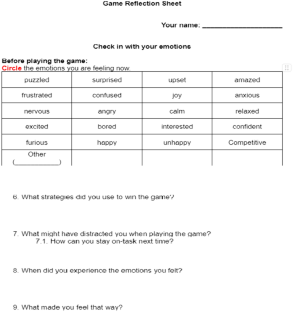Educational Technology Research and Development ( IF 5.580 ) Pub Date : 2024-04-18 , DOI: 10.1007/s11423-024-10369-7 Ai-Chu Elisha Ding , Kuo-Ting Tim Huang , Jessica DuBois , Huali Fu

|
Secondary science students still struggle to master scientific concepts and apply content-based knowledge. The instructional design behind the incorporation of innovative technology and the use of game-based learning (GBL) could be a key to increasing student acquisition of science knowledge. Using a mixed methods design, this study examined the effects of a scaffolded Game-based Learning (GBL) science unit using a virtual reality (VR) game component. The VR game focused on the scientific method, lab safety, and equipment, and purposefully embedded instructional scaffolds to support the needs of diverse learners. The quasi-experimental study (pre- and post-test design) investigated the acquisition of targeted science knowledge with student groups of differing motivation levels and under two different game modes (immersive and non-immersive). With a mixed methods embedded design, quantitative data (student pre- and post-tests) was analyzed first followed by qualitative data (classroom video observations and student focus groups). Statistical analysis revealed: (1) students demonstrate an overall improvement on the post-test of targeted science knowledge in a scaffolded GBL learning design, (2) students using the immersive VR mode showed greater improvement in targeted science knowledge than students using the non-immersive desktop game, and (3) students with low intrinsic motivation performed better in the immersive VR than the desktop version. Further examination of qualitative data uncovered the GBL curricular activities and scaffolds may have also contributed to students’ science learning gains through reflection and discussion after gameplay experiences. The repeated multimodal learning opportunities and the opportunities to learn through whole-body movements were also found to be the potential reasons why the immersive VR group outperformed the non-immersive group.
中文翻译:

将沉浸式虚拟现实技术融入支架式游戏学习中,增强低积极性学生的多模式科学学习
中学理科学生仍然难以掌握科学概念和应用基于内容的知识。结合创新技术和使用基于游戏的学习(GBL)背后的教学设计可能是增加学生获取科学知识的关键。本研究采用混合方法设计,检验了使用虚拟现实 (VR) 游戏组件的基于游戏的学习 (GBL) 科学单元的效果。 VR 游戏侧重于科学方法、实验室安全和设备,并有目的地嵌入教学支架来支持不同学习者的需求。准实验研究(测试前和测试后设计)调查了不同动机水平的学生群体在两种不同的游戏模式(沉浸式和非沉浸式)下对有针对性的科学知识的获取。采用混合方法嵌入式设计,首先分析定量数据(学生测试前和测试后),然后分析定性数据(课堂视频观察和学生焦点小组)。统计分析显示:(1)在支架式GBL学习设计中,学生在针对性科学知识的后测中表现出整体进步,(2)使用沉浸式VR模式的学生比使用非沉浸式VR模式的学生在针对性科学知识方面表现出更大的进步。沉浸式桌面游戏,(3) 内在动机较低的学生在沉浸式 VR 中比桌面版本表现更好。对定性数据的进一步检查发现,GBL 课程活动和支架也可能有助于学生通过游戏体验后的反思和讨论来获得科学学习的收益。重复的多模式学习机会和通过全身运动学习的机会也被发现是沉浸式 VR 组优于非沉浸式组的潜在原因。



























 京公网安备 11010802027423号
京公网安备 11010802027423号